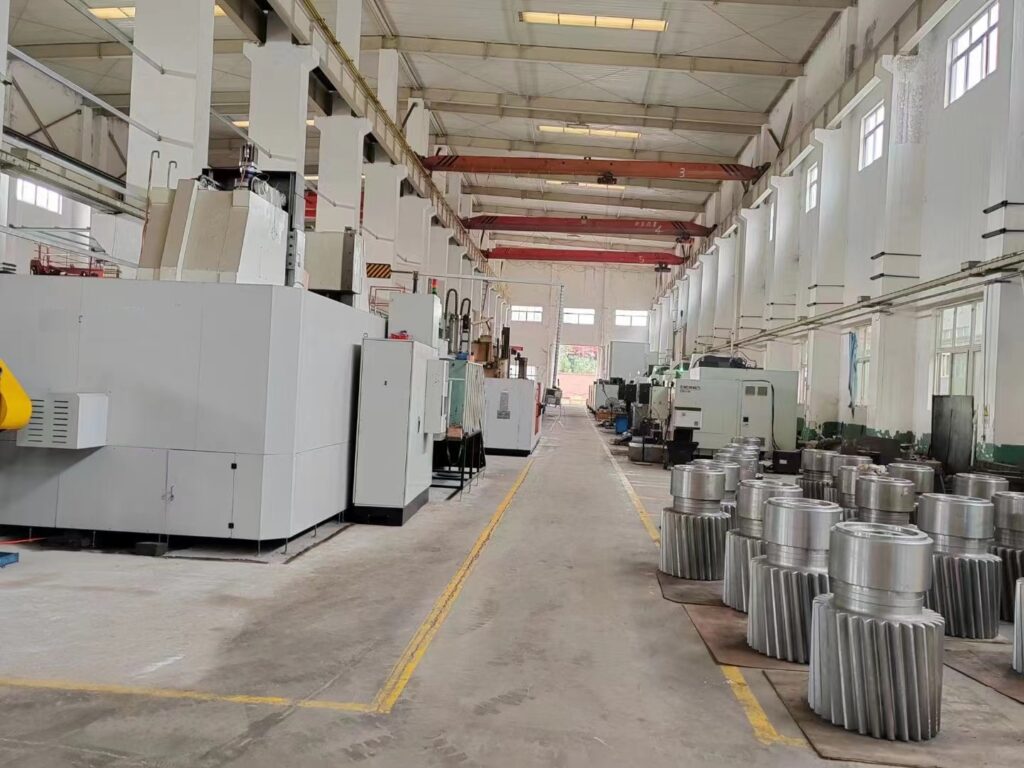Sourcing custom gears from China can significantly reduce costs while ensuring high product quality. With a well-developed gear manufacturing supply chain, China offers professional services from raw materials to precision machining. However, the import process involves multiple steps and requires careful planning. This article outlines the key steps, important considerations, and how to choose a reliable Chinese supplier when importing custom gears.
1. Why Choose Chinese Suppliers?
China is one of the world’s largest gear manufacturing hubs, offering several advantages:
✅ Cost Advantage: Compared to European or American manufacturers, Chinese gear prices are typically 30–50% lower.
✅ Manufacturing Capability: Able to produce various gear types (e.g., helical gears, bevel gears, gear rings, worm gears), with precision levels reaching ISO Class 5 or even higher.
✅ Mature Supply Chain: Complete industry chain from forging and heat treatment to precision machining.
✅ Flexible Customization: Supports small-volume pilot runs (e.g., 1–50 pieces) as well as large-scale mass production.
2. How to Select the Right Chinese Gear Supplier?
(1) Evaluate Supplier Qualifications
- Factory Certifications: ISO 9001, IATF 16949 (for automotive applications), etc.
- Equipment Capability: CNC gear hobbing machines, gear grinding machines.
- Industry Experience: Has the supplier served similar clients in industries like wind power or automotive?
(2) Request Samples or Trial Orders
- Ask for gear samples to test dimensional accuracy, hardness, etc.
- Place a small-volume trial order (e.g., 50–100 pcs) to verify quality consistency.
(3) Clarify Technical Requirements
To ensure accurate production, it’s essential to provide detailed technical information. There are two common approaches:
- Technical Drawings: Include complete specifications such as:
- Gear Parameters: Module, number of teeth, pressure angle, material
- Processing Requirements: Heat treatment (e.g., carburizing, nitriding), surface treatment (e.g., black oxide, zinc plating)
- Inspection Standards: ISO 1328, AGMA 2001, or other relevant standards
- Physical Samples: If detailed drawings are not available, you can also send samples. We offer reverse engineering services to replicate gears based on existing parts.
3. Detailed Import Procedure
(1) Sign the Contract
- Define payment terms (e.g., 30% deposit, 70% before shipment).
- Agree on lead time (usually 6–8 weeks depending on complexity).
- Include warranty terms (e.g., free repair within 12 months).
(2) Production & Quality Control
- Request production updates (e.g., photos during rough machining, heat treatment, grinding stages).
- Ask for inspection reports on dimensions, hardness, microstructure, precision, and gear meshing, etc.
(3) Logistics & Customs Clearance
- Shipping Methods:
- Small orders: Air freight (3–5 days, more expensive).
- Large orders: Sea freight (20–40 days, requires booking in advance).
- Customs Documents:
- Commercial Invoice
- Packing List
- Certificate of Origin (COO)
(4) Duties and Taxes
- HS Code Lookup: Gears are usually classified under HS Code 8483.40 (tariff rates vary by country).
4. Common Issues and Solutions
❌ Issue 1: Quality Not Up to Standard
- Solutions:
- Clearly define acceptance criteria in the contract.
- Request inspection data.
❌ Issue 2: Delivery Delays
- Solutions:
- Tie payment milestones to production stages.
- Choose suppliers with export experience.
5. Conclusion & Recommendations
- Prioritize suppliers with export experience.
- Start with a small trial order before scaling up, to reduce risk.
With proper planning, importing custom gears from China can be a cost-effective and high-quality solution.
Thank you for reading. We are looking forward to serving you with our exceptional gear solutions. #BeyondGears
Read More:


